 Today’s post remembering the anniversary of the Gulf Coast oil spill comes from Tammy Gordon, Director, Social Communications and Strategy at AARP. It originally appeared on the AARP blog on April 20, 2011.
Today’s post remembering the anniversary of the Gulf Coast oil spill comes from Tammy Gordon, Director, Social Communications and Strategy at AARP. It originally appeared on the AARP blog on April 20, 2011.
As native Gulf Coast gal, I watched in horror one year ago as I saw the BP oil spill spewing into my gorgeous blue waters. The environmentalist in me worried about the birds, sea life and habitats. The foodie in me worried about the fish, oysters and shrimp that I was raised on. The human in me worried about all of the people who make their living off of the waters and what might happen to the beautiful beaches I grew up on.

Though the economic and environmental damage is still being felt today, the good news is all waters that were once closed due to the spill are now open. And there are still ways we can help. Here are five of my favorites:
1) Help kids who’s parents may be struggling due to the loss of jobs. Volunteer or donate to the Recovery School District in Lousiana. Your time or money can help kids in this special school district set up to get extra help to struggling schools. Serve as a guest speaker at a school in New Orleans. I love volunteering in ways that use what I do well to help others. Are you a social media expert? Volunteer to teach a class of students on social media for a cause. Are you an accountant? Teach kids how to set up a budget and save for the things they want. Like to cook? Serve as a guest speaker and teach kids about healthy eating that tastes good. Everyone is good at something and can share that with others.
2.) Volunteer on-the-ground in Louisiana or Mississippi. Hands On Network is an organization is in more than 300 communities hooking people up with ways to give back. In New Orleans alone they have engaged more than 17,200 volunteers since Hurricanes Katrina and Rita alone… and they just won a grant to support coastal Lousiana communities recover from the effects of the oil spill. And the Mississippi chapter has hosted over 400 “alternative” spring breakers.
3.) Help coastal fisherman regain their way of life. On the Gulf coast, fishing isn’t just recreation or a job… its a way of life. Friends of Fisherman is supporting this way of life that often goes back seven or eight generations.
4.) Cook with gulf coast seafood and visit Gulf coast beaches. Wait. I can help. By. Eating. And. Traveling? Yes. The , joined by some of the top chefs in the country, leapt into action after the spill. They tested and certified the safety of the seafood and ensured nothing got to market that was unsafe. Today, as the Gulf seafood industry bounces back, they need all of us home cooks to support it. And the beaches are as gorgeous now as they ever were. If you haven’t experienced the sugar-squeaky white sand beaches and emerald waters, consider taking your family there on vacation. The towns are quaint, filled with Southern cham and long stretches of gorgeous coast to enjoy. [My personal favorite spots are St. George Island, Rosemary Beach and Destin in my home state of Florida.]
5.) Create some good in YOUR community. You didn’t think I’d get all the way through a volunteering post without mentioning Create The Good, our awesome community connector where you can find ways to help on whatever you care about where you live. Can’t get to the Gulf Coast? Search for river or beach clean ups near you. Can’t find one? Start one!
Tammy Gordon is the Director, Social Communications and Strategy at AARP. She’s a florida native, blog hoarder, and twitter addict. train aarp staff and volunteers on how to use social networks.

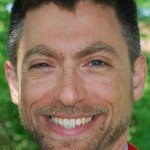 by Chris de Veer, former Volunteer & Director of Hands On Gulf Coast (2006 – 2008)
by Chris de Veer, former Volunteer & Director of Hands On Gulf Coast (2006 – 2008) The first neighborhood I visited was East Biloxi, home to many Vietnamese and African Americans.
The first neighborhood I visited was East Biloxi, home to many Vietnamese and African Americans.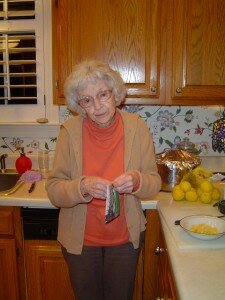 Two years before Katrina, I visited my Grandma, pulled out her photo albums, scanned in every photo, made a database, and asked her to identify everyone in every photo, estimate when the photo was taken, and describe what was going on.
Two years before Katrina, I visited my Grandma, pulled out her photo albums, scanned in every photo, made a database, and asked her to identify everyone in every photo, estimate when the photo was taken, and describe what was going on.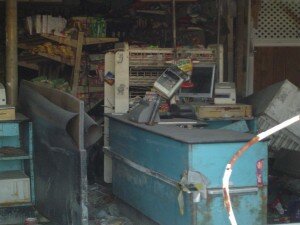 ench of rot was overpowering.
ench of rot was overpowering.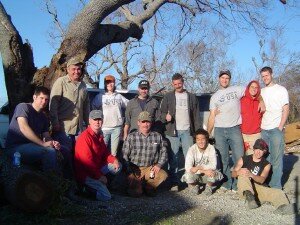 I know my grandmother was lucky compared to many other victims of Katrina.
I know my grandmother was lucky compared to many other victims of Katrina.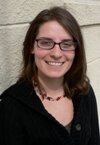
 I don’t think either of us truly knew what we were in for…and I think back and cannot believe that there were people from our national office that believed we had the capacity and ability to accomplish what we accomplished.
I don’t think either of us truly knew what we were in for…and I think back and cannot believe that there were people from our national office that believed we had the capacity and ability to accomplish what we accomplished.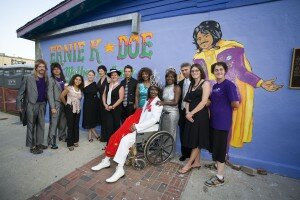 So many people have come from around the world and either come back multiple times or have decided to make New Orleans their home.
So many people have come from around the world and either come back multiple times or have decided to make New Orleans their home.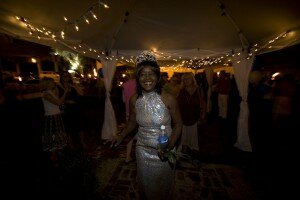

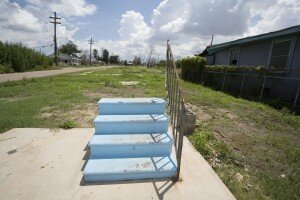 When we were in the Gulf volunteering, the physical destruction caused by the storm was no longer represented by piles of debris or the twisted remains of buildings, but rather by endless stretches of emptiness marked only by driveways and stairs leading to the ghosts of vanished front doors.
When we were in the Gulf volunteering, the physical destruction caused by the storm was no longer represented by piles of debris or the twisted remains of buildings, but rather by endless stretches of emptiness marked only by driveways and stairs leading to the ghosts of vanished front doors.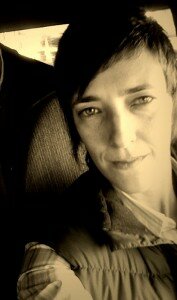 by Erika Putinsky
by Erika Putinsky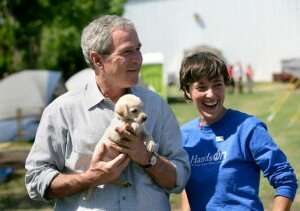 During my efforts with HandsOn Network on the Gulf Coast after Hurricane Katrina, I had the opportunity to live and work in a place where our nation truly came together as a unified community.
During my efforts with HandsOn Network on the Gulf Coast after Hurricane Katrina, I had the opportunity to live and work in a place where our nation truly came together as a unified community.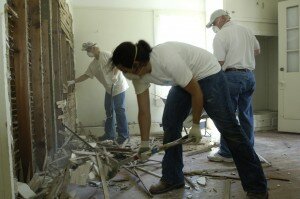 Once the images of the despair and the stories of the survivors reached our world, people began to act.
Once the images of the despair and the stories of the survivors reached our world, people began to act. After the hurricane so many people remembered the power in showing up, being willing to help with a hammer to rebuild a home, or offer a hug to rebuild a life.
After the hurricane so many people remembered the power in showing up, being willing to help with a hammer to rebuild a home, or offer a hug to rebuild a life.

 We’re used to this Hurry up and wait for the end of the world as you know it! atmosphere. Tropical depressions become tropical storms, meander into the Gulf of Mexico, and then churn about a bit in the warm waters and threaten to pinball anywhere between Texas and Florida as a full blown hurricane, giving us in Louisiana, Mississippi, and Alabama plenty of time to promptly get worried, shrug it off, work up a panic, exhale in relief, and then do a double take as we pass by a television that, swear to God, sounded like it just said we might take a direct hit after all.
We’re used to this Hurry up and wait for the end of the world as you know it! atmosphere. Tropical depressions become tropical storms, meander into the Gulf of Mexico, and then churn about a bit in the warm waters and threaten to pinball anywhere between Texas and Florida as a full blown hurricane, giving us in Louisiana, Mississippi, and Alabama plenty of time to promptly get worried, shrug it off, work up a panic, exhale in relief, and then do a double take as we pass by a television that, swear to God, sounded like it just said we might take a direct hit after all.
 One of our biggest needs right now is finding educators to come in. A major lesson of
One of our biggest needs right now is finding educators to come in. A major lesson of  Over the weekend, approximately 600 volunteers in Escambia County, Florida helped clean up Pensacola Beach and on Perdido Key, the County Commissioner responsible for that area said that over 500 volunteers were assisting in the clean-up.
Over the weekend, approximately 600 volunteers in Escambia County, Florida helped clean up Pensacola Beach and on Perdido Key, the County Commissioner responsible for that area said that over 500 volunteers were assisting in the clean-up.
